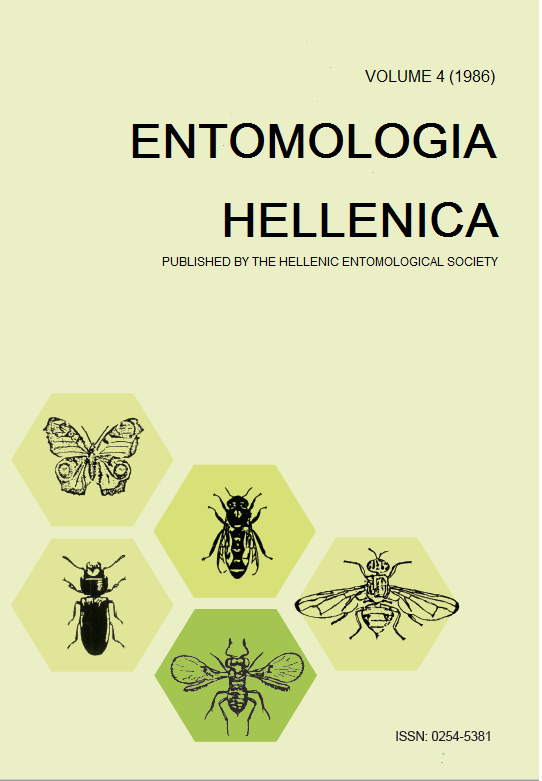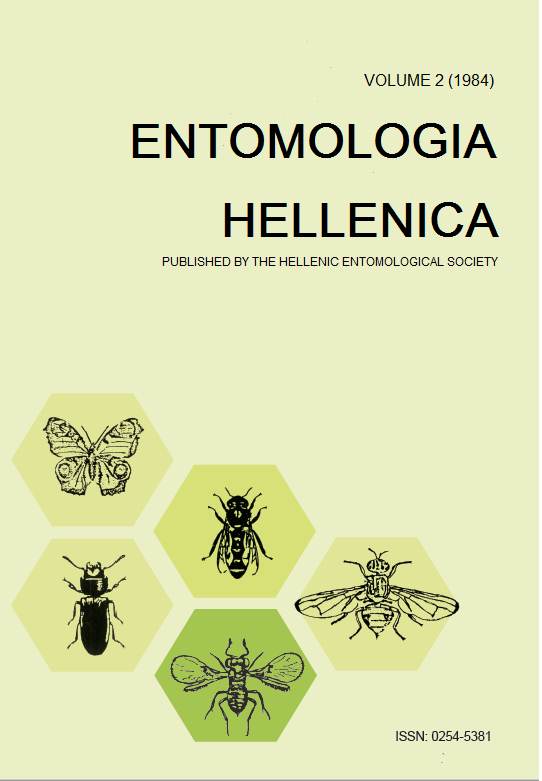Επίδραση του Μεγέθους, Χρώματος και Υψους Ανάρτησης της Παγίδας Φερομόνης με Κόλλα στις Συλλήψεις του Δάκου της Ελιάς
Περίληψη
Το μέγεθος της παγίδας φερομόνης με κόλλα δεν έχει επίδραση στις συλλήψεις δάκου όταν η πυκνότητα του πληθυσμού του εντόμου είναι χαμηλή. Σε περιπτώσεις όμως υψηλών δακοπληθυσμών ο αριθμός των συλλαμθανομένων εντόμων αυξάνεται με την αύξηση της επιφάνειας της παγίδας. Το χρώμα της παγίδας φερομόνης δεν έχει επίδραση στις συλλήψεις δάκων σε περιόδους υψηλής δραστικότητας της φερομόνης, που συμπίπτουν με τις περιόδους υψηλής αναπαραγωγικής δραστηριότητας του εντόμου. Σε περιόδους μειωμένης δραστικότητας της φερομόνης, είτε λόγω χαμηλών θερμοκρασιών κατά τις ώρες δράσεως των παγίδων (σούρουπο), είτε λόγω μειωμένης αναπαραγωγικής δραστηριότητας του εντόμου, οι παγίδες κίτρινου χρώματος συλλαμβάνουν περισσότερα έντομα από τις παγίδες λευκού χρώματος. Το ύψος της παγίδας φερομόνης εντός του φυλλώματος του δέντρου δεν έχει επίδραση στις συλλήψεις.
Λεπτομέρειες άρθρου
- Πώς να δημιουργήσετε Αναφορές
-
Haniotakis, G. (1986). Επίδραση του Μεγέθους, Χρώματος και Υψους Ανάρτησης της Παγίδας Φερομόνης με Κόλλα στις Συλλήψεις του Δάκου της Ελιάς. ENTOMOLOGIA HELLENICA, 4, 55–61. https://doi.org/10.12681/eh.13933
- Τεύχος
- Τόμ. 4 (1986)
- Ενότητα
- Articles

Αυτή η εργασία είναι αδειοδοτημένη υπό το CC Αναφορά Δημιουργού – Μη Εμπορική Χρήση – Παρόμοια Διανομή 4.0.
Authors who publish with this journal agree to the following terms:
Authors retain copyright and grant the journal right of first publication with the work simultaneously licensed under a Creative Commons 4.0 license.
Authors are able to enter into separate, additional contractual arrangements for the non-exclusive distribution of the journal's published version of the work (e.g. post it to an institutional repository or publish it in a book), with an acknowledgement of its initial publication in this journal. Authors are permitted and encouraged to post their work online (preferably in institutional repositories or on their website) prior to and during the submission process, as it can lead to productive exchanges, as well as earlier and greater citation of published work.






